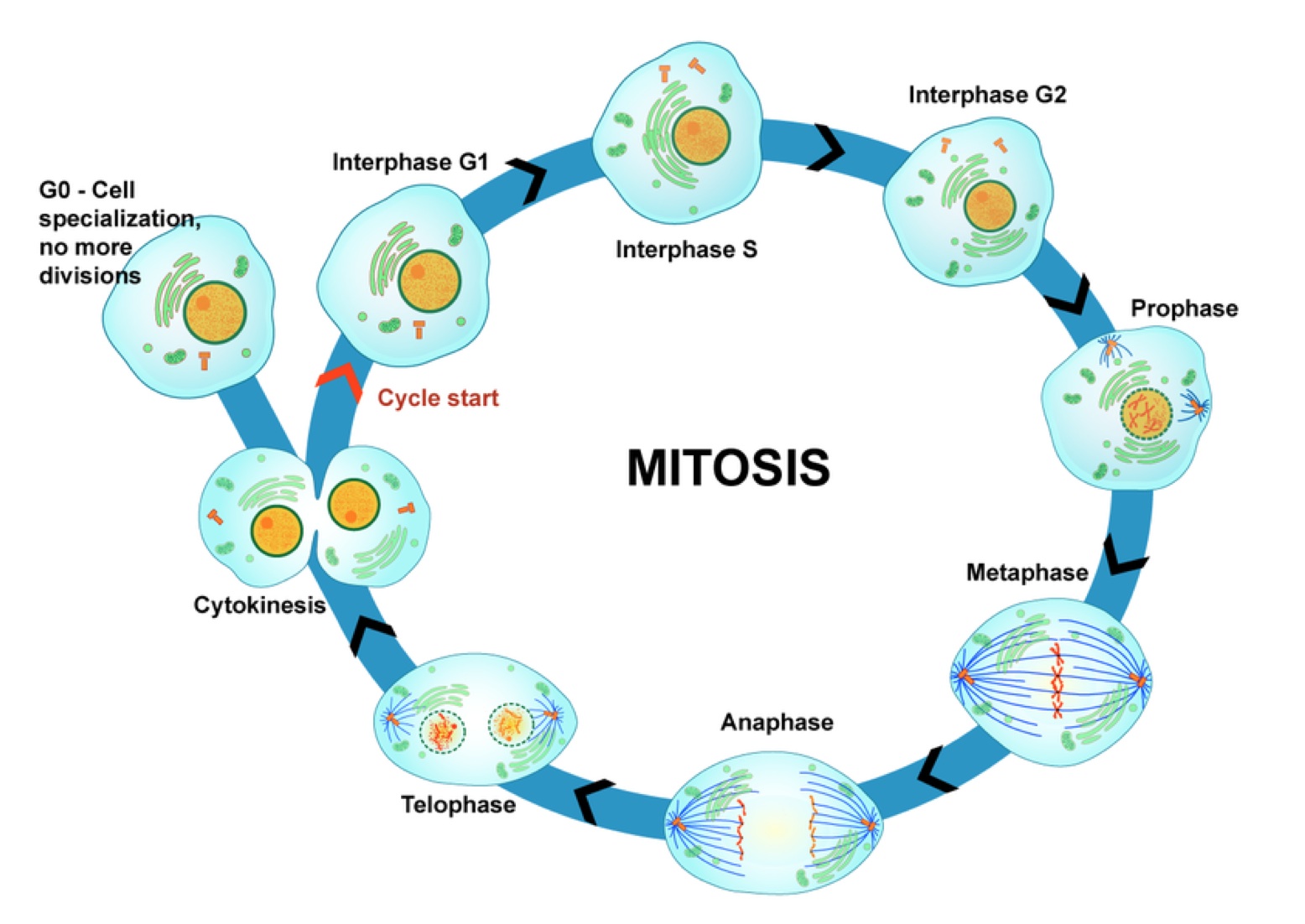
Mitosis
Mitosis consists of four basic phases: prophase, metaphase, anaphase, and telophase. Some textbooks list five, breaking prophase into an early phase (called prophase) and a late phase (called prometaphase).

Mitosis Infographic Lesson In for a penny, in for a pound
Mitosis is divided into four stages (PMAT) listed below. Prophase → Metaphase → Anaphase → Telophase. Cytokinesis, the process of cell division, occurs during the last stage of mitosis (telophase). Some cells do not go though mitosis. In this case, these cells move from G 1 of the cell cycle into a resting phase known as G 0.

CHEO [licensed for use only] / Mitosis and Meiosis
Mitosis begins. The chromosomes take shape as the DNA condenses. The nuclear envelope begins to break down. The two centrosomes begin to move toward the cellular poles, sprouting microtubules as they go. Metaphase. Linkage and alignment. Some microtubules of the mitotic spindle form a cage around the cell's former nucleus while others attach to.
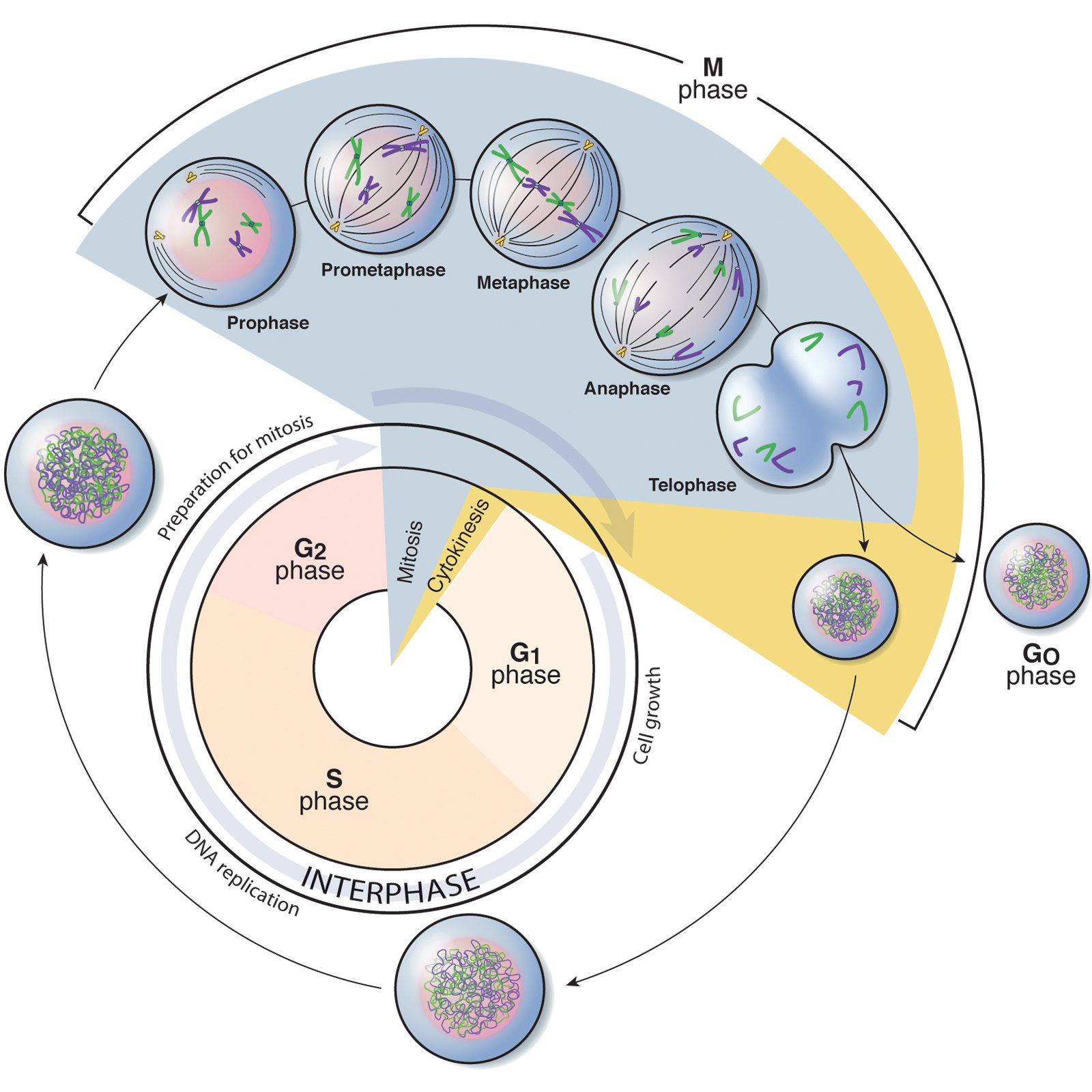
Phases of the cell cycle Battista Illustration
Mitosis is the mechanism that allows the nuclei of cells to split and provide each daughter cell with a complete set of chromosomes during cellular division. This, coupled with cytokinesis (division of the cytoplasm), occurs in all multicellular plants and animals to permit growth of the organism.

How do our cells make more of themselves?? msmomofosho
Mitosis is the phase of the cell cycle where chromosomes in the nucleus are evenly divided between two cells. When the cell division process is complete, two daughter cells with identical genetic material are produced. Interphase Ed Reschke/Photolibrary/Getty Images
/stages-of-mitosis-373534-V5-5b84992cc9e77c00574f03d3.png)
The Stages of Mitosis and Cell Division
The purpose of mitosis is to produce more cells. After the first round of mitosis, there are only two cells. These cells both undergo mitosis, and there are 4 cells. Pretty soon, a small, hollow ball of cells is formed, called the blastula. This ball folds in on itself as more and more cells are created.

What is mitosis? Facts
There are actually 5 stages of mitosis. Interphase is part of the cell cycle, but precedes mitosis. The 5 stages are: 1. Prophase 2. Prometaphase 3. Metaphase 4. Anaphase 5. Telophase Cytokinesis is also part of the cell cycle, but this is not part of mitosis. This is part of the interphase. anon47002 September 30, 2009
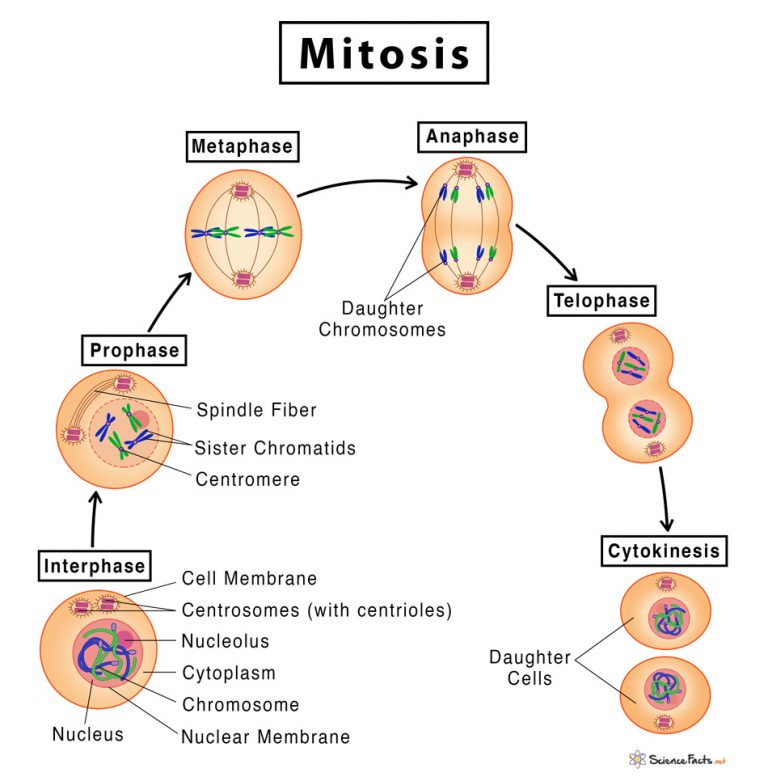
Mitosis Definition, Stages, & Purpose, with Diagram
AboutTranscript. Mitosis, a key part of the cell cycle, involves a series of stages (prophase, metaphase, anaphase, and telophase) that facilitate cell division and genetic information transmission. Centrosomes and microtubules play pivotal roles in orchestrating this complex process, ensuring the successful replication of cells.
/GettyImages-5304586361-59dfd070845b3400116b5d8b.jpg)
Understand the Stages of Mitosis and Cell Division
The cell cycle. In eukaryotic cells, the cell cycle is divided into two major phases: interphase and mitosis (or the mitotic (M) phase). Interphase is the longest part of the cell cycle. This is when the cell grows and copies its DNA before moving into mitosis. During mitosis, chromosomes will align, separate, and move into new daughter cells.

Mitosis mitotic cell division, stages and significance Online
Phases. Mitosis is conventionally divided into 5 phases: prophase, metaphase, anaphase and telophase, and cytokinesis. In interphase, a nuclear envelope surrounds the nucleus, the DNA is replicated in the S phase, and the sister chromatids join together at the central portion of the chromosome - the centromere. To organize the chromosome motion.
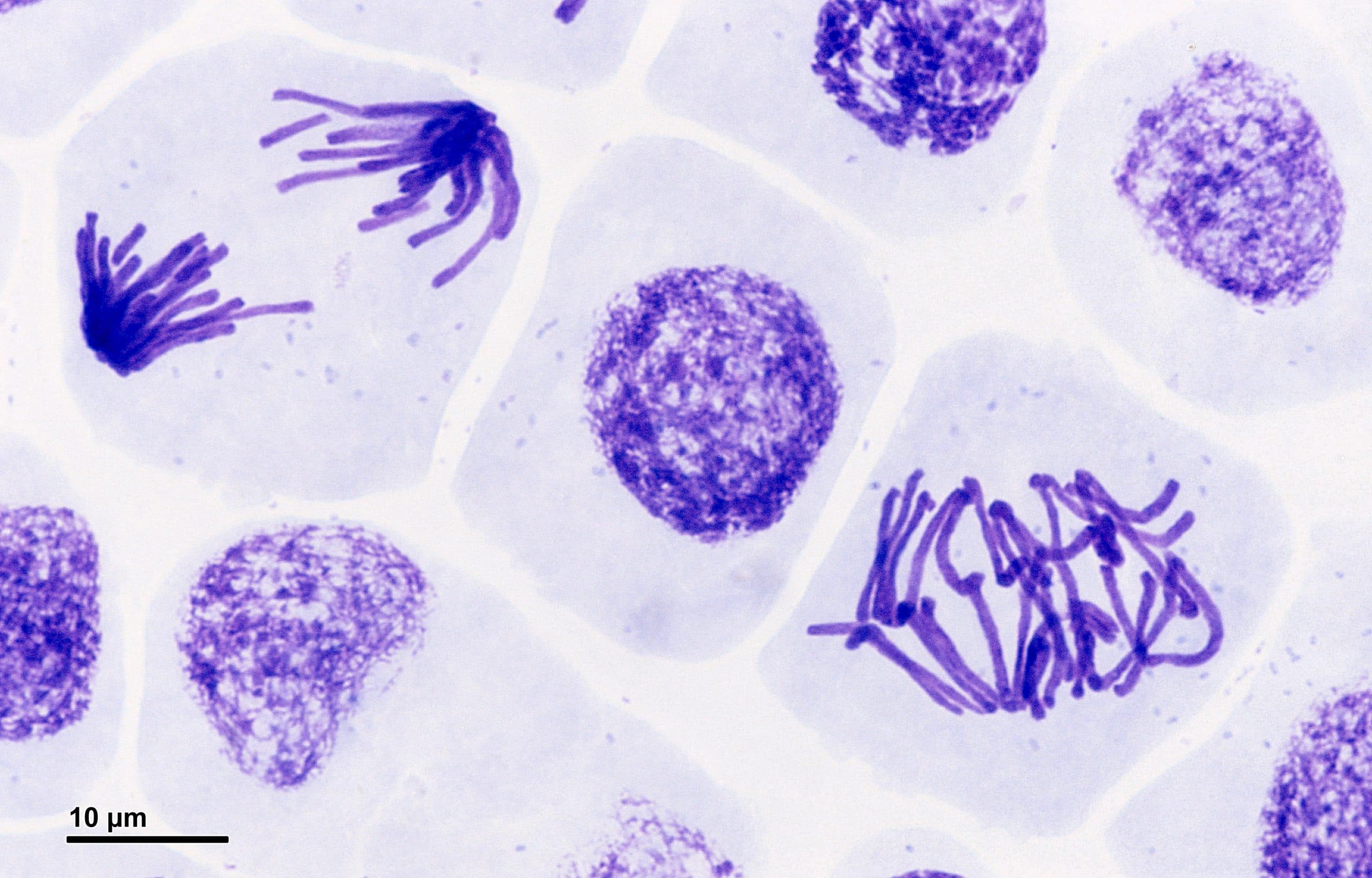
Mitosis Stages Prophase Metaphase TeachMePhysiology
Mitosis is the phase of the cell cycle where the nucleus of a cell is divided into two nuclei with an equal amount of genetic material in both the daughter nuclei. It succeeds the G2 phase and is succeeded by cytoplasmic division after the separation of the nucleus.
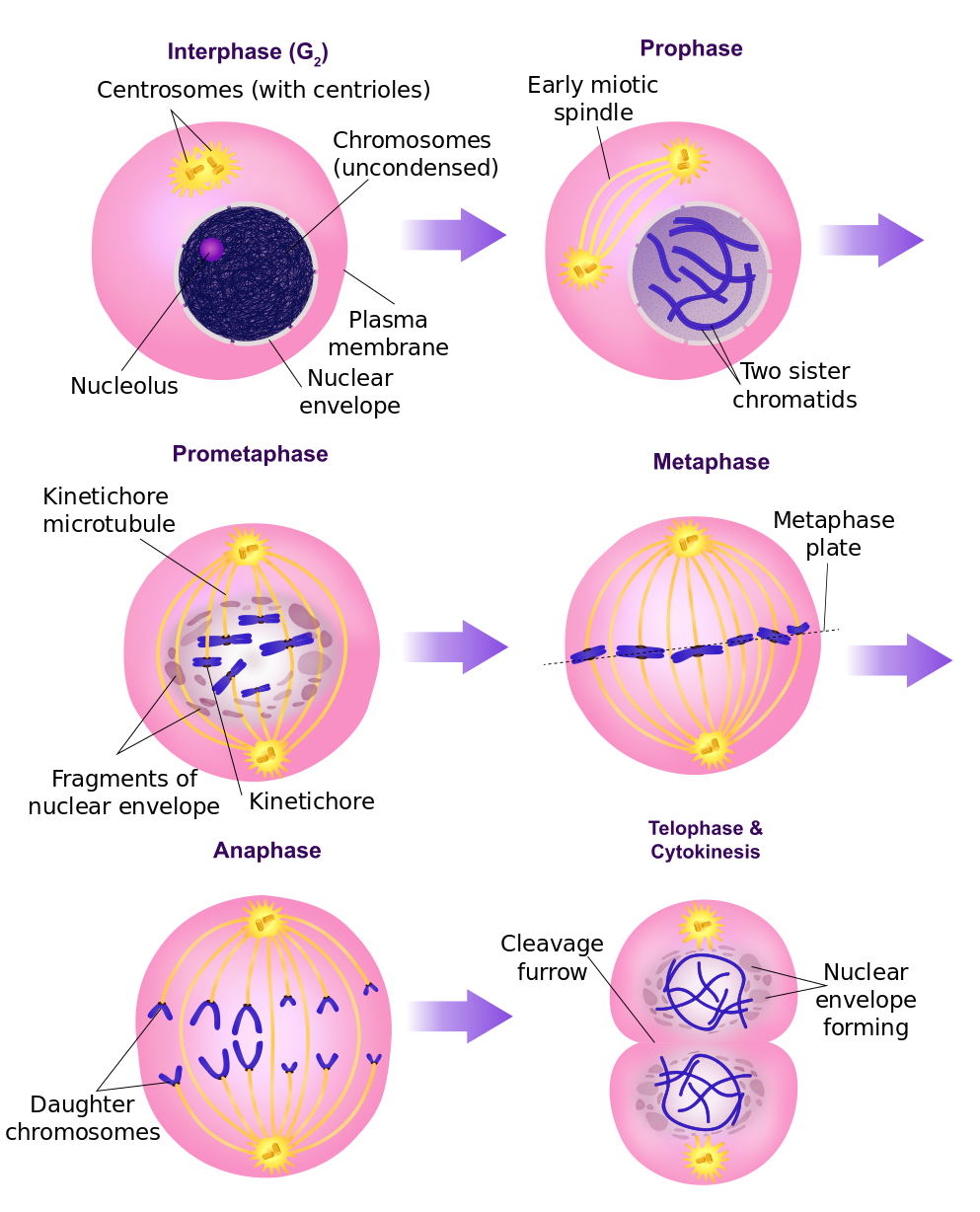
Mitosis Cell Phases Division Google Search Mitosis Cell Division Hot
Interphase The cell spends most of its life in this phase. The DNA in chromosomes copies itself ready for mitosis. Prophase The DNA in chromosomes and their copies condenses to become more visible.

FileMitosis schematic diagramen.svg Wikimedia Commons
The role of mitosis in the cell cycle is to replicate the genetic material in an existing cell—known as the "parent cell"—and distribute that genetic material to two new cells, known as "daughter cells." In order to pass its genetic material to the two new daughter cells, a parent cell must undergo cell division, or mitosis.
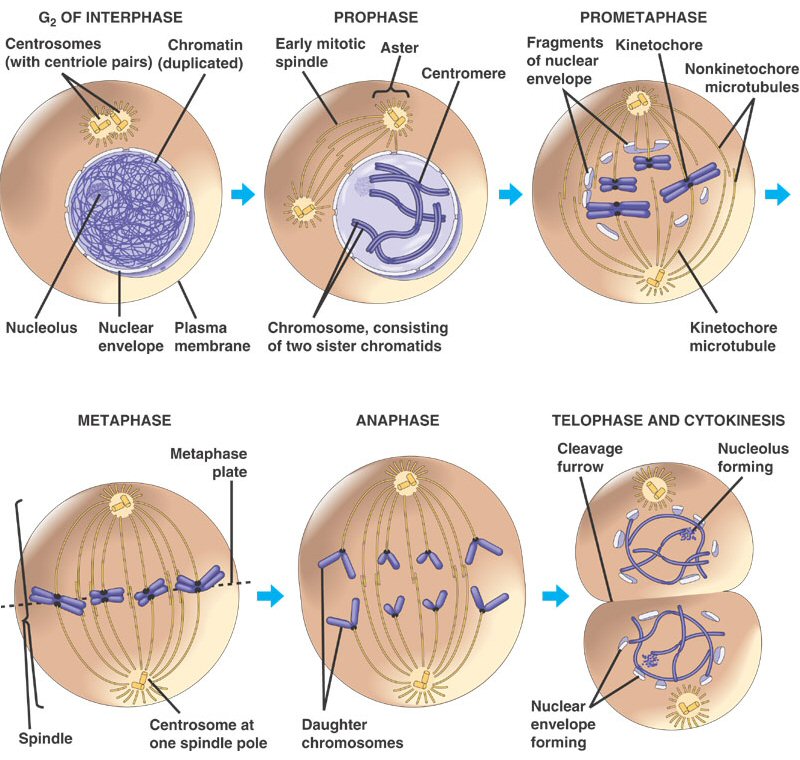
fhsbiowiki / Mitosis
The M phase completes the cell cycle. 'M' could be mitosis or meiosis depending on the type of cell. For the zygote, the goal is to make more somatic cells. Therefore, it goes through mitosis and gives rise to two daughter cells. This completes the life cycle of the zygote and starts the lifecycle of the new cells.
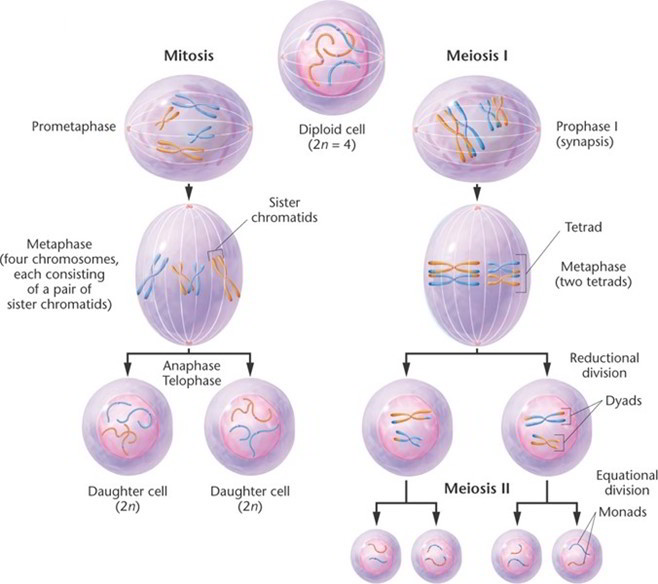
Mitosis and Its Phases Earth's Lab
1. Interphase 2. Prophase 3. Prometaphase 4. Metaphase 5. Anaphase 6. Telophase 7. Cytokinesis Applications of Mitosis Mitosis Video and Animation References Purpose of Mitosis The process of mitosis is significant in both cell division as well as cell reproduction. Some of the major significances/purposes are given below:
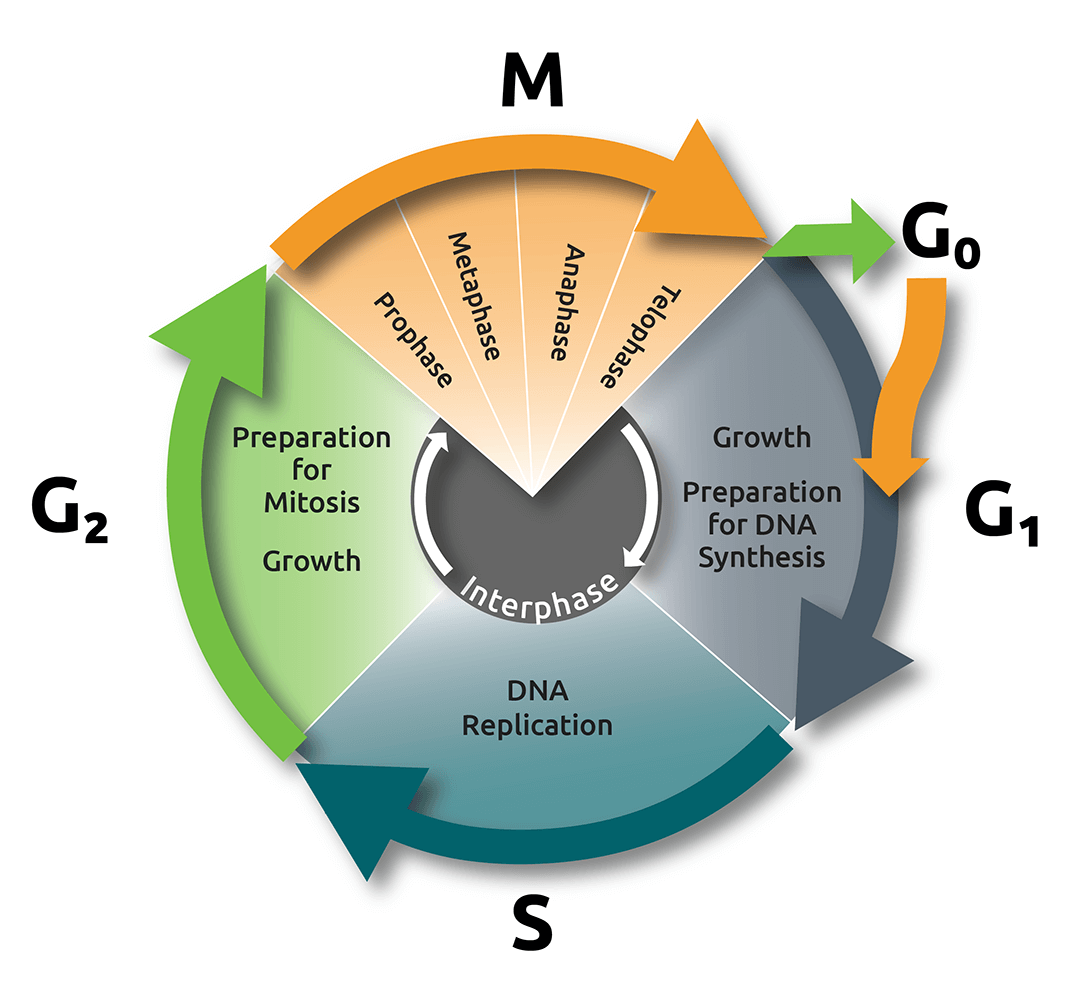
Nanolive imaging captures discrete phases of mitosis in spectacular detail
The mitotic phase (also known as M phase) is a multistep process during which the duplicated chromosomes are aligned, separated, and move into two new, identical daughter cells. The first portion of the mitotic phase is called karyokinesis, or nuclear division.